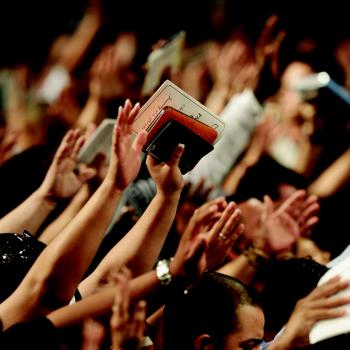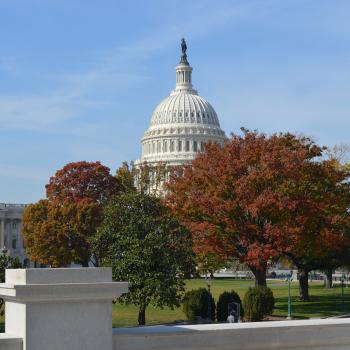So now let’s talk about the migrant caravan that’s surging towards our porous southern border.
Currently, the caravan is made up mainly of Hondurans, fleeing the violent, impoverished conditions of their homeland, with some Guatemalans and Mexicans joining.
The Wall Street Journal has covered the growing caravan, mapping its progress, and talking about the inevitable political quagmire that it creates for lawmakers in the United States.
The caravan has swelled to roughly 5,000 since Oct. 12, when several hundred people decided to trek north from San Pedro Sula, Honduras, one of the world’s most violent cities. The numbers grew quickly after local media and social activists drew attention to the caravan. Leftist politicians gave them further visibility by using it to criticize the Honduran government for failing to provide economic opportunity at home.
After a pilgrimage across Guatemala, the caravan got to Tecun Uman, on the Mexico-Guatemala border last Wednesday.
Of course, President Trump has been on a Twitter tirade, concerning the caravan. This is a situation tailor-made for the orange con’s calls to his base. That it’s happening right before a midterm election is particularly advantageous.
Trump can (and has) pointed out the coming “invasion” and has suggested he will militarize the southern border, as well as cut aid to those nations that fail to stop their people from advancing on our borders.
Mexico has tried, with mixed success.
They attempted to stop the crowd, saying they would only let 150 in at a time, in order to allow them the apply for asylum.
At that time, the caravan broke into groups, with one group taking Mexico up on its offer. A second group of several hundred chose to return to Honduras by bus.
The third group, however, is the problem.
This was the largest group. They chose to jump in rafts being manned by human traffickers and made their way across a river into Mexico.
Mexico appeared to be unable or unwilling to stop the third group. By Monday, those who had crossed illegally—numbering in the thousands—settled down in the central square of this coastal city, still close to the Guatemalan border. Many were children, some of them carried on shoulders. Many migrants were visibly exhausted and hungry after 10 days of relentless travel. The majority slept outdoors in the square, using their backpacks as pillows.
The group faces a difficult journey through some of the most violent areas of Mexico. There are several routes, including a 1,100-mile long journey to the border town of Reynosa, across from McAllen, Texas, or a far longer 2,420-mile trek to Tijuana, across from San Diego.
I don’t know how the “most violent areas of Mexico” compare to the violence in Honduras, but they apparently are crossing, anyway. At the risk of sounding callous, however, how much of that is our concern?
We should absolutely care about any sort of violence or corruption in the world, and we should want to use our status as a world power to end it, or at least, curtail it.
When we can’t keep a lid on violence and corruption in our own inner cities, however, and we have veterans living in the streets, we may not have all the answers.
So who is supporting this effort, and how do they plan to proceed?
“We can’t get to the northern border all together” said Irineo Mujica, the head of People without Borders, a U.S.-Mexico nonprofit that has been supporting the caravan since its arrival in Guatemala. “You can’t move a group so large across hundreds of miles. Impossible.”
He also said a huge caravan moving across Mexico just days before the U.S. midterms would embolden Mr. Trump. “If this full caravan arrives to the U.S. border, it would be like a declaration of war,” Mr. Mujica said.
And that is how many will see it.
Some of the news footage of the caravan doesn’t present the kind of image you would want, if your goal is to present a picture of the poor, huddled masses, yearning to be free.
Grown men violently tearing down barriers is alarming.
People claiming oppression in their homelands, as they advance towards a sovereign nation, waving the flag of the nation they fled is enraging, to be frank.
As a Christian, my heart aches for those so desperate they would risk such flight. That being said, there is something very wrong with celebrating the very thing you fled.
There’s nothing wrong with being Honduran (or Guatemalan, or Mexican), but respect our sovereignty, as well.
Others remained confident the caravan could remain united and get to the U.S. border. “The plan is to get to Tijuana! The fight continues, we don’t give up,” said Denis Contreras, a Honduran migrant and social activist who is helping to organize the caravan, a loudspeaker in hand.
Why is it that they only feel empowered to violate our laws, but they’re not nearly so determined, when it comes to staying in their homelands and fighting for reform?
Yes, I know the reaction I’m going to get for this. Somebody is going to accuse me of being a Trumpist, but anyone following my body of work knows it is quite the opposite.
All of this is just common sense.
Many of those in the caravan don’t even know what rights they have, or legal options, as far as making it into the United States. All they know is that their current conditions are untenable.
“I was at my apartment near Tegucigalpa when I saw on [my news] channel that the caravan was leaving,” said Maria Rodriguez, 17, who said a criminal gang extorted her family business. “I said to myself: that’s my opportunity.”
She said the gang demanded a “war tax,” calling it that because if you don’t pay the gang destroys your business and kills you.
And that sucks.
What sucks just as much is that the police presence in many parts of these nations is not much help. In fact, some are just as corrupt as the gangs.
A spokeswoman for Mexico’s migration agency said the Mexico-Guatemala border is porous. “There are a lot of informal entry points” along the river, she said. “Those who entered the country illegally will be deported.”
To date, however, Mexico has done little to go after the caravan. Jorge Chabat, an expert on U.S.-Mexican relations at the University of Guadalajara, has pointed out how this further strains the relationship between the Trump administration and Mexico.
“There is the pressure from Trump to return the migrants, but how do you do that with the thousands that have crossed without having an incident where somebody could get killed?” said Mr. Chabat. “But if you let them all in, then tomorrow you will have four more caravans.”
Indeed.
Moises Starkman, a political economy professor at the Universidad Tecnica de America Central in Honduras, said he believes that immigration from Honduras to the U.S. will continue unabated for the foreseeable future.
“The magnet of the American dream is very strong,” he said. “Many more people will leave depending on what happens to this caravan.”
President Trump, of course, is incapable of addressing the issue like a grown up. His language, geared towards inflaming his base, points to “criminals and Middle Easterners,” when many of the migrants are children.
Sadly, it looks like Mexico’s Police and Military are unable to stop the Caravan heading to the Southern Border of the United States. Criminals and unknown Middle Easterners are mixed in. I have alerted Border Patrol and Military that this is a National Emergy. Must change laws!
— Donald J. Trump (@realDonaldTrump) October 22, 2018
What are we to do, as a nation?
I don’t know, but I wholly reject the embrace of this as an election season talking point.










